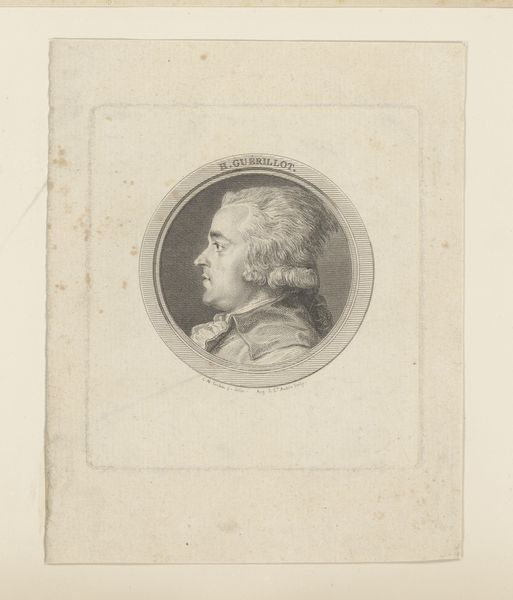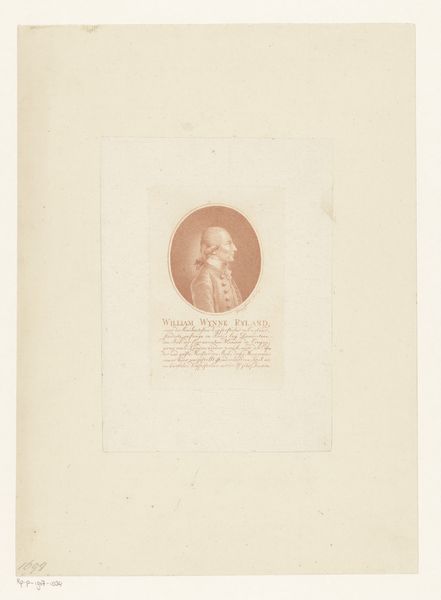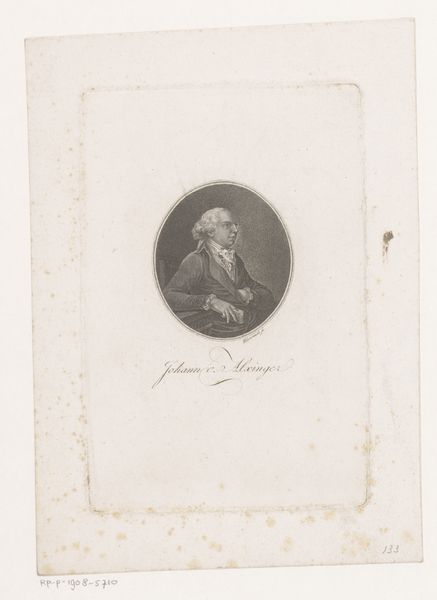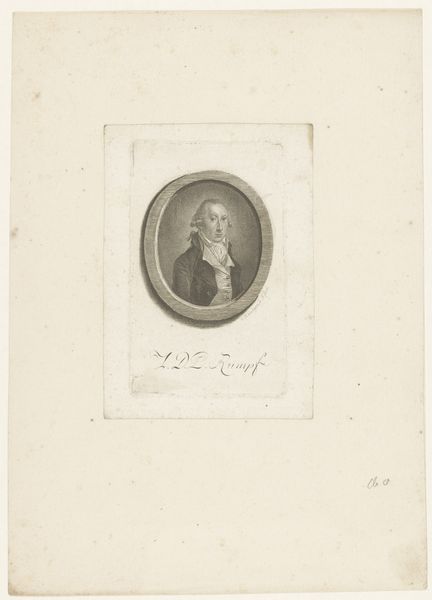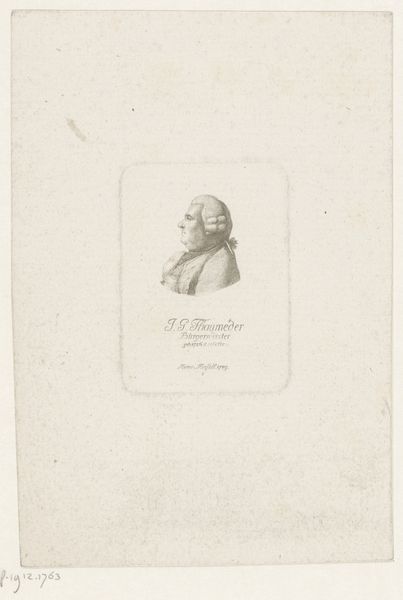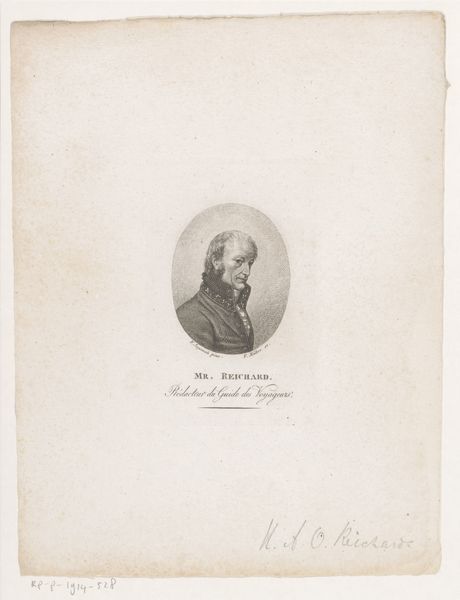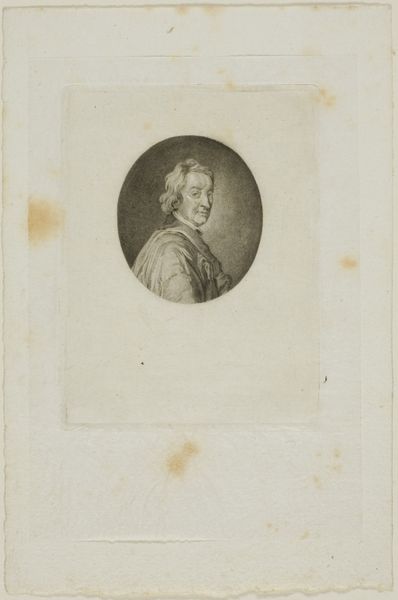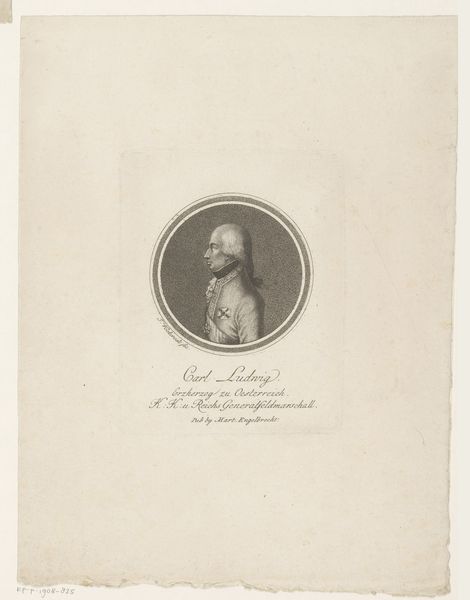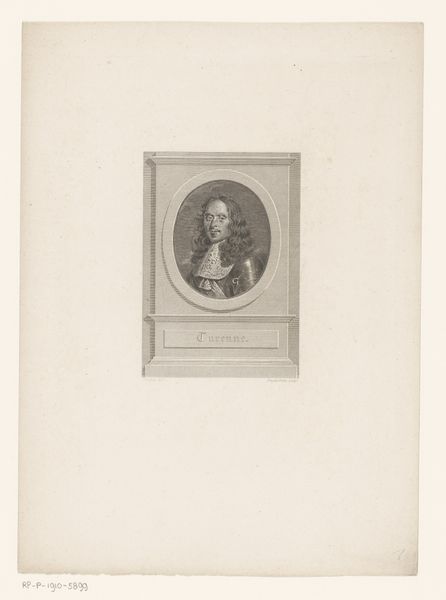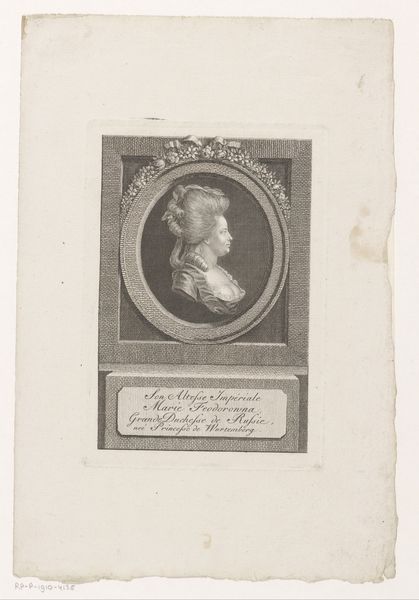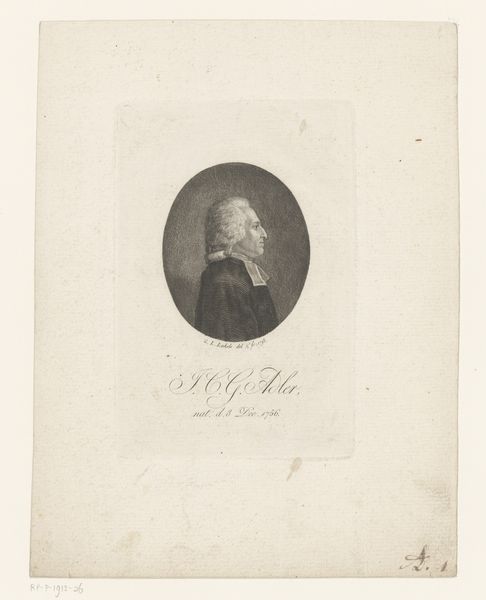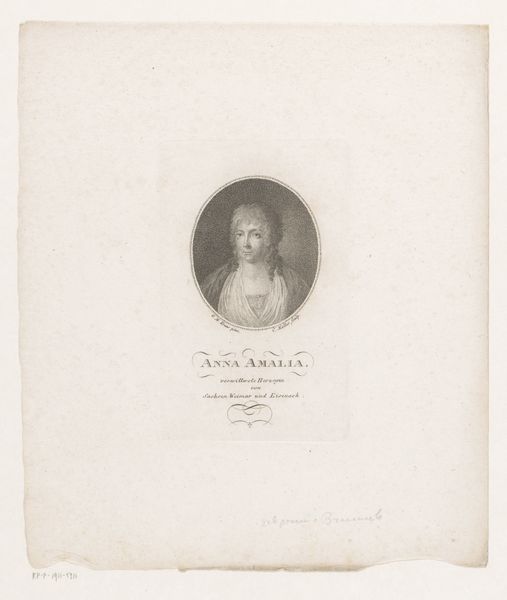
drawing, print, etching, paper, engraving
#
portrait
#
drawing
# print
#
etching
#
paper
#
history-painting
#
engraving
Dimensions: 39 × 34 mm (image); 80 × 60 mm (plate); 119 × 98 mm (sheet)
Copyright: Public Domain
This portrait of John Dryden was made by Jean-Baptiste de Grateloup, using a technique called manière noire, or mezzotint. This printmaking method allows for rich tonal values and subtle gradations of light and shadow. Grateloup didn't just draw on a plate and print it in the traditional way. Instead, he roughened the entire copper plate with a tool called a rocker, creating a surface full of tiny burrs that would hold ink. The artist then selectively burnished or smoothed areas of the plate to create lighter tones, and ultimately the image of Dryden emerges from the darkness. This laborious process reflects the time and skill involved in producing such a refined portrait. The mezzotint technique was particularly popular in the 18th century for reproducing paintings, allowing for wider dissemination of images, and democratizing visual culture, albeit with a heavy investment of hand work. Considering the context, this print embodies a tension between artistry and industry, as printmakers sought to meet growing demand while maintaining artistic standards. In paying close attention to the materials, making, and context, we can appreciate the full meaning of this artwork and begin to blur the lines between craft and fine art.
Comments
No comments
Be the first to comment and join the conversation on the ultimate creative platform.
